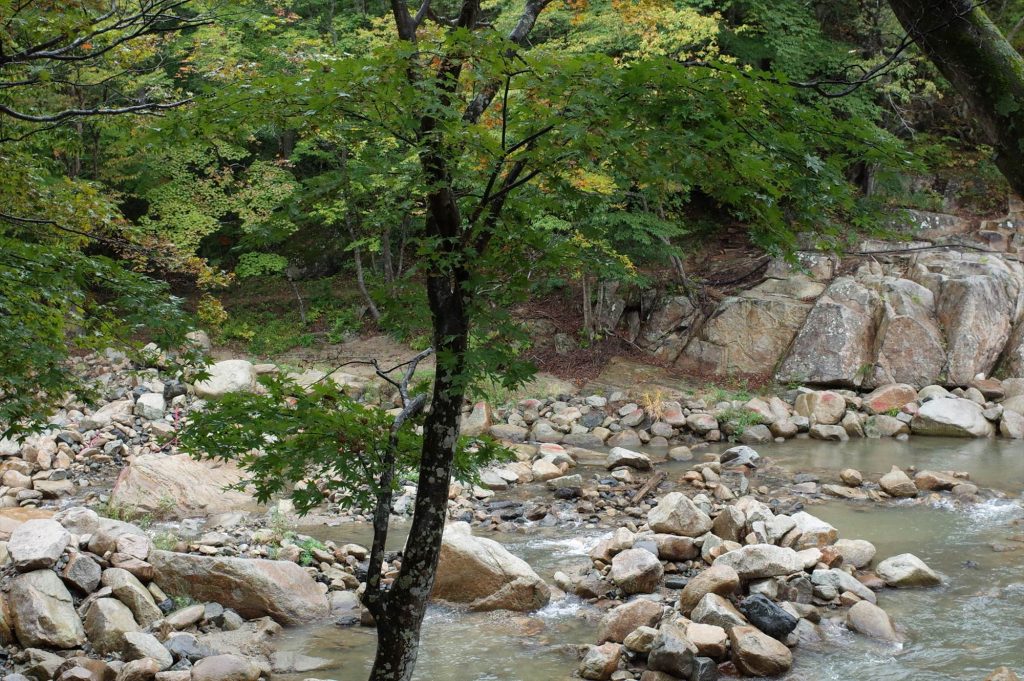20211010
Marumori
October 6-8, 2021, to Marumori Town, Miyagi Prefecture. Haruka Komori + Natsumi Seo will talk to local people in connection with the production of their work.
Since this is their first visit and also a preview, we will accompany the girls, who have been conducting research and filming in Marumorimachi since this spring, for interviews and workshops.
On the first day, we interviewed Ms. K, a former firefighter whose house was flooded. Because of her job, she is very knowledgeable about disaster prevention. I was impressed by how calmly he described the damage and its causes.
The next morning, we went to a campground near where we were staying. It is located along the Abukuma River, and seems to be characterized by river sports and other activities. However, there was still a broken bridge with fresh scars and a huge driftwood that had been pulled out at the root lying nearby. A lot of large stones immediately catch my attention. According to Mr. Seo, this is an area with many large stones and the ground is hard and strong. However, he said that in the typhoon of 2019, many of those big stones rolled down from upstream, and those stones caused some of the damage.
Civil engineering work was underway upstream of the campground. Although it was not clear exactly what kind of construction work was being done, it appeared that they were removing sediment that had accumulated on the river bottom.
The workshop organized by Komori and Seo with local men and women of all ages (and a wide variety of participants, which is appropriate to describe them), and the talk by a couple who live near the solar power facility and raise cattle, were all very interesting. For more information about this, these women will be presenting a special exhibition “Memories Sink into the Earth, Across the Wind: Emerging Artists in Japan vol. 18 at the Tokyo Metropolitan Museum of Photography starting November 6. I will not go into the details here, as they are more detailed in “A>.
Compared to the areas hit by the Great East Japan Earthquake, the mountainous areas of the region, although there are villages in various parts of the country, the houses seem to be quite scattered. The density of houses is therefore lower. Contrary to the density (?) There are levees and seawalls being constructed everywhere. The scenery was peaceful and tranquil, with the rustling of the river, the rustling of leaves, and the sounds of birds and insects, all typical of a Japanese countryside. There are the low mechanical sounds of heavy machinery and the clanking of something being tapped. They are not particularly noticeable, but they are all about the same volume and sound like a basso continuo.
I found this very strange. Marumorimachi is a town, but it covers a fairly large area. But the sound of construction is everywhere. It is like meditation or sleep-inducing music, the sound of machinery overlaid with the sound of beautiful nature.
I feel that this tugging may be one response.
